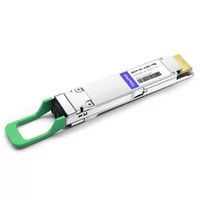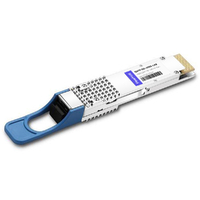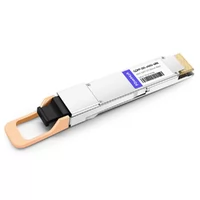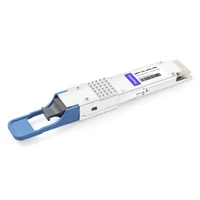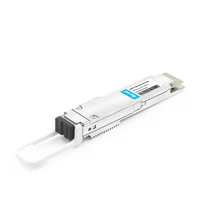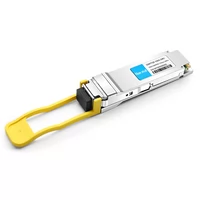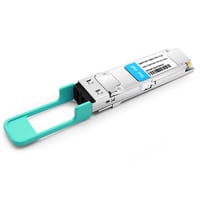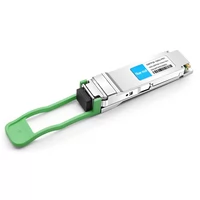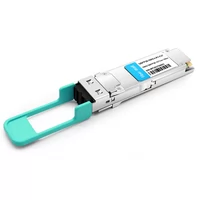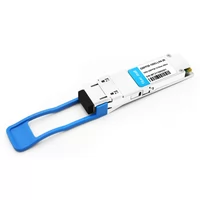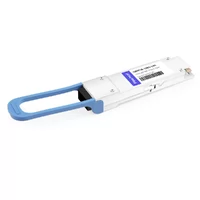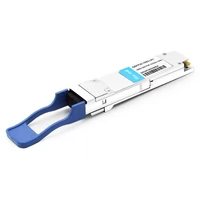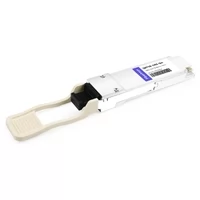Short range optical communications can be a bit of a surprise. The most direct application area of optical communication is ultra-high speed, ultra-large capacity, and ultra-long distance optical communication. Optical communication was initially used to solve the long-distance, high-speed telecommunications service transmission, and then slowly introduced into the data center network to provide client-side high-speed rate interfaces.
Table of Contents
ToggleThe Evolution of Short Range Optical Communications
To this day, it is already obvious that optical communication is penetrating into shorter range transmission. For example, the industry has recently used co-packaged optical technology to solve the problem of optical interconnection within modules and between chips, and the capacity of a single switching chip will be as high as 25.6 Tb/s. As shown in Figure 1, typical application scenarios of optical communication at different transmission distances and the penetration to shorter distances are listed.
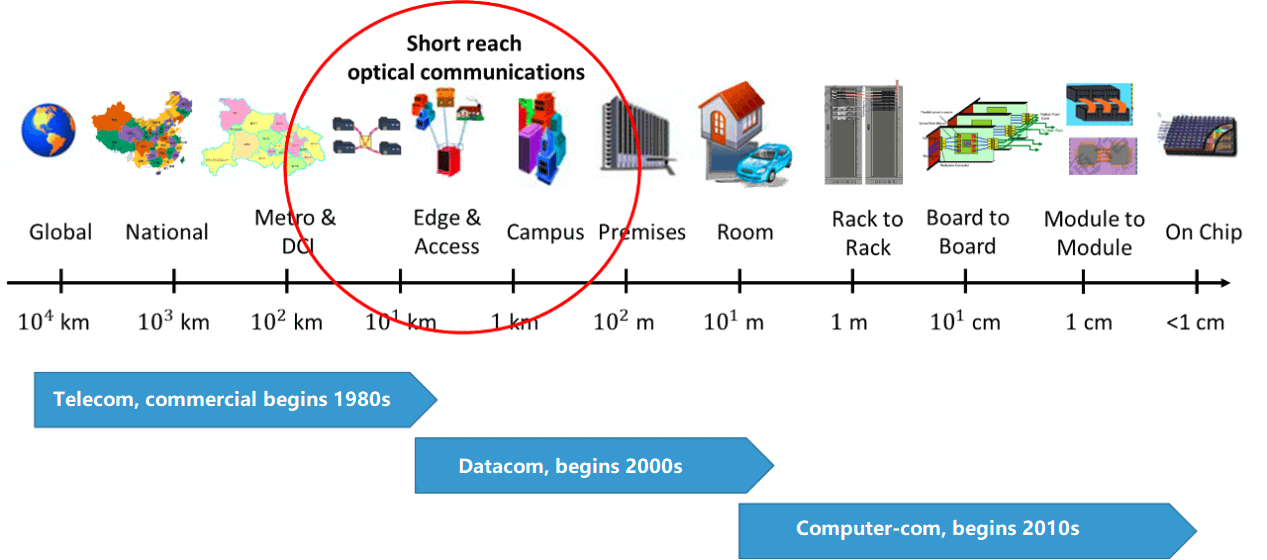
Figure 1. Evolution of optical communication applications
It’s no coincidence that more and more applications for optical communications are shifting to short-haul. Cisco predicted this trend several years ago, and it was confirmed. Metropolitan network traffic already surpassed long-haul backbone networks in 2017, and with the rise of content delivery networks (CDN) and the growth of cloud-related services, data center network-related traffic is now comparable to Internet IP traffic.
It is expected that by next year, the share of traffic within data centers will exceed 70%, while the share of east-west traffic is nearly 85%, far exceeding north-south traffic, as shown in Figure 2.
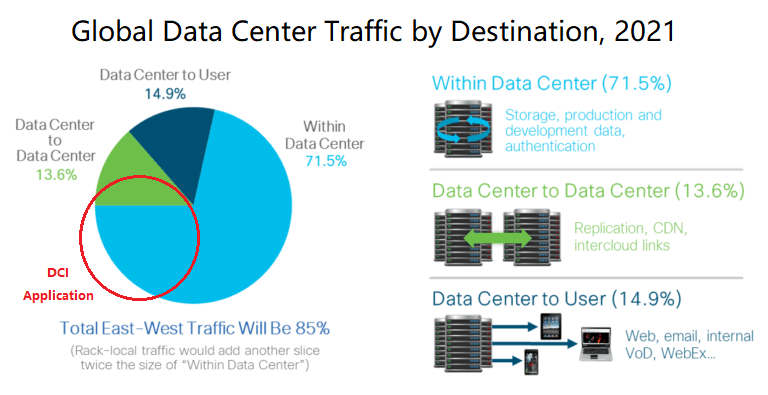
Figure 2. Cisco Forecast Data Center Traffic Distribution in 2021
Therefore, it has to be said that the network of the future will be dominated by data centers, and short-range optical transmission must be emphasized. Not only that, but with the shift in network architecture, a lot of content is being brought closer to users to provide lower latency services. Therefore, the more short-haul applications, the stronger the demand for bandwidth.
The current long-haul backbone has just been upgraded to 200G, but demand in short-haul data centers has long reached 400G, and some will even be upgraded to 800G interface rates. This year, the Ethernet Alliance has released the 800G Ethernet specification. Obviously, short-range applications represented by data centers, supercomputing clusters and other interconnected networks have become a new growth point for optical communications outside the telecom market, and the importance is self-evident.
Definition of Short Range Optical Communication
What is short range optical communication? There are many different answers.
IEEE defines short range (SR) as about 100m, and OIF defines short range as 300m. But the academic community has even extended the range of short range optical communication to about 100km. It seems that there is no clear figure to clearly define what is short range optical communication, and it is worthwhile to define all optical communication within the 100m~100km interval as short range optical communication in the next introduction. That is, the red circled part in Figure 1, of course, called short range optical communication is more appropriate. For optical communication within 100m, it should be called short range optical interconnection, which refers to intra-system, inter-board, or on-board interconnection.
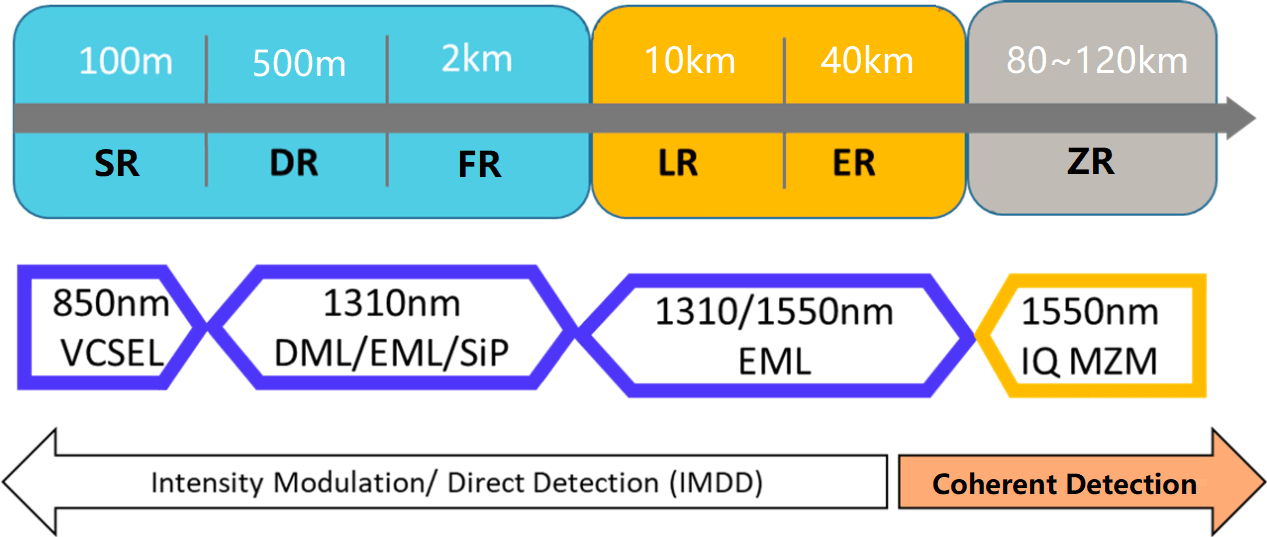
Figure 3. Further breakdown of scenarios and key technologies for short range optical communications
As shown in Figure 3, the short range optical communication is further subdivided and contains scenarios such as SR, DR, FR, LR, ER, and ZR according to the transmission distance from near to far.
Standards for Short Range Optical Communications
For these different distance applications, the industry has now also introduced 100G and 400G client-side optical interconnection standards, as shown in Table 1.
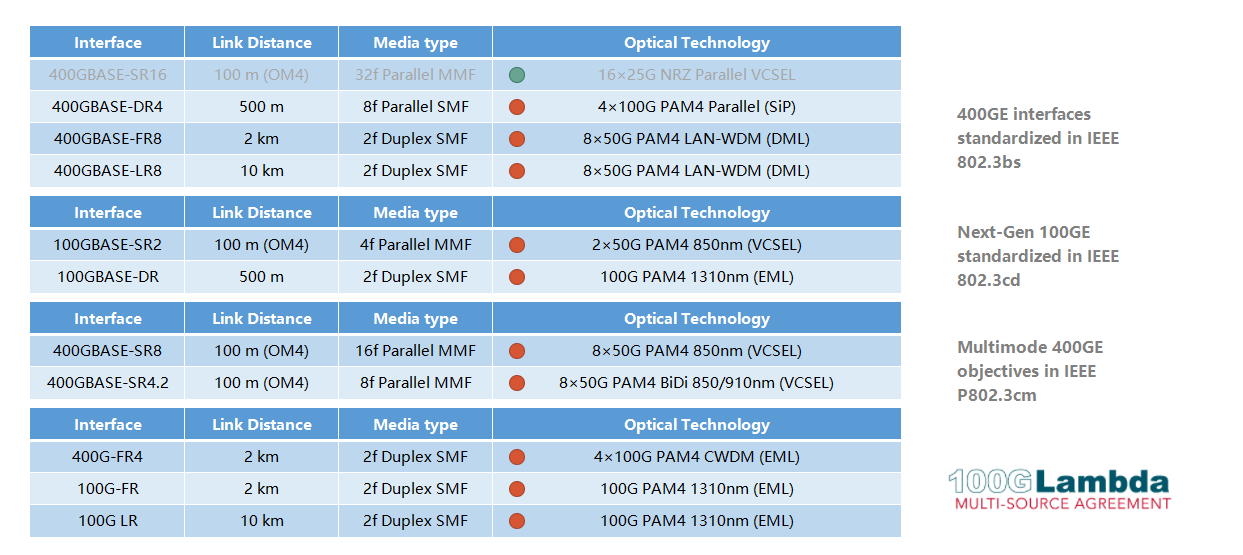
Table 1. 100G/400G related client-side standards
It can be seen that:
For 100m, it is mainly multimode transmission technology with 850nm VCSEL light source array.
For 500m to 2km, single-mode transmission technology is commonly used, and the light source is more diverse, which can be 1310nm DML, SiP or even EML.
For 10km to 40km, 1310/1550nm EML or even MZM is required. 1310 has the advantage of low dispersion but high loss and no mature low-cost O-band optical amplifier at this distance. The advantage of using 1550 is the low loss of the fiber, there is a mature optical amplifier, but the dispersion impact is larger.
In addition to data center communications, there is another important class of applications for 10km optical communications, which is the 5G fronthaul construction that is in full swing. Table 2 summarizes the typical technical solutions and corresponding standards in China.
5G fronthaul mainly uses O-band wavelength division multiplexing, using DML direct modulation to generate 25Gb/s NRZ signal, and PIN detection at the receiving end, the main difficulty is to reduce the cost and control the dispersion cost of long wavelengths. DWDM-based technology is expected to be difficult to scale in 5G forward transmission, although there is greater expansion potential and power budget, but adjustable EML + TEC cost is significantly higher than other programs.
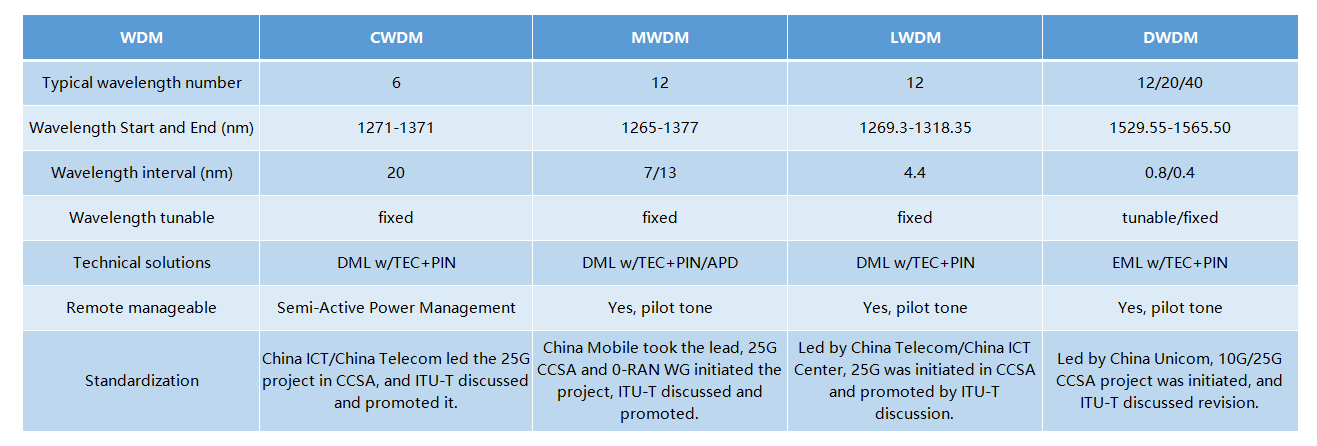
Table 2. Technical comparison of typical 5G fronthaul solutions
Of course for 20km optical communication, there are also important applications within the telecom industry, generally known as optical access networks, also known as passive optical networks (PON). This area is completely internationally standardized technology, and currently PON has gone through APON, BPON, G/EPON, 10G EPON, XGSPON, etc. The highest rate commercially available is symmetrical 10Gb/s. But standardization has been at the forefront, including 40GTWDM-PON, also called NGPON2, which was completed a few years ago. The 25G EPON identified in 2018, and even the single-wave 50G PON currently being discussed by both ITU-T and IEEE. The core problem in this area is the cost and power budget issue, which boils down to the lack of low-cost high-speed and high-sensitivity modulation reception solutions. Further, for 80km ZR applications, OIF has already released a 400ZR implementation protocol with 60Gbaud 16QAM modulation and 100G or 75GHz channel spacing, while IEEE is also discussing a 100GE/400GBASE ZR standard in IEEE P802.3 ct/cw, which is expected to be maximally compatible with OIF 400ZR. Obviously for 100G as well as 400G ZR 80km level of optical transmission industry generally agreed that the need to introduce 100G/400G coherent detection technology.
Modulation and multiplexing technologies for short-range optical communications
In terms of current industry standards and market solutions, there are currently only two modulation formats that are widely adopted by the industry in short-range. One is 25Gb/s NRZ, which is mainly used in 4x25G 100G interfaces; the other is PAM4 modulation with 50Gb/s and 100Gb/s single-wave rates, which can be used to realize 8x50G or 4x100G 400G interfaces, as well as 1x100G single-wave 100G customer-side interfaces. For future 800G short-range interconnects, there may be 8x100G PAM4 and possibly even 4x200G PAM4 solutions.
For short range coherent optical transmission, none of the currently standardized schemes define techniques similar to probabilistic shaping PCS and super strong forward error correction coding such as LDPC. Among the coherent systems that already have standards, such as MSA, OIF, ITU-T, OpenROADM, IEEE, CableLabs have only defined (D)QPSK, 8QAM, 16QAM, which are relatively simple modulation formats. As for the FEC, the earliest 100G MSA defines the staircase HD FEC with 6.7% overhead and NCG=9.8dB, later the C-FEC defined in OIF 400 ZR with 14.8% overhead and NCG=10.8dB for 16QAM, and the O-FEC defined in OpenROADM with 15.1% overhead. After three iterations of decoding, the NCG of 16QAM can reach 11.6dB.
In terms of multiplexing methods, two types of multiplexing are often used in the current standardized 100G/400G short-haul optical interconnects. One is space division multiplexing, multiple singlemode/multimode fiber MPO connectors to achieve multi-channel binding. The second is wavelength division multiplexing, where multiple wavelengths are transmitted in the same singlemode or multimode fiber.
Table 3 summarizes the classification of multiplexing technologies used for 100G interface rates. It is worth noting that silicon-optical technology used in air-division multiplexing systems can have better cost advantages, because only one wavelength power is needed to split into several paths and then into the silicon-optical modulator array. Not only can you control the size, but you can also reduce the cost of the laser. However, the power budget is expected to be the main obstacle for silicon optical technology in short-range optical interconnect applications.

Table 3. Comparison of multiplexing technologies used in 100G interfaces
The above content is Fiber Mall’s main introduction to the evolution of short-range optical communication trends, distance boundaries, standards advances, modulation and multiplexing technologies commonly used in the industry, with a focus on the introduction of technologies used in mature applications in industry.
Fiber Mall will also discuss the advanced modulation technology, new detection technology, DSP algorithm, 800G/1.6T technology evolution comparison, etc. from the perspective of academia.
Related Products:
-
 QSFP-DD-400G-FR4 400G QSFP-DD FR4 PAM4 CWDM4 2km LC SMF FEC Optical Transceiver Module
$500.00
QSFP-DD-400G-FR4 400G QSFP-DD FR4 PAM4 CWDM4 2km LC SMF FEC Optical Transceiver Module
$500.00
-
 QSFP-DD-400G-LR8 400G QSFP-DD LR8 PAM4 LWDM8 10km LC SMF FEC Optical Transceiver Module
$2500.00
QSFP-DD-400G-LR8 400G QSFP-DD LR8 PAM4 LWDM8 10km LC SMF FEC Optical Transceiver Module
$2500.00
-
 QSFP-DD-400G-SR8 400G QSFP-DD SR8 PAM4 850nm 100m MTP/MPO OM3 FEC Optical Transceiver Module
$149.00
QSFP-DD-400G-SR8 400G QSFP-DD SR8 PAM4 850nm 100m MTP/MPO OM3 FEC Optical Transceiver Module
$149.00
-
 QSFP-DD-400G-DR4 400G QSFP-DD DR4 PAM4 1310nm 500m MTP/MPO SMF FEC Optical Transceiver Module
$400.00
QSFP-DD-400G-DR4 400G QSFP-DD DR4 PAM4 1310nm 500m MTP/MPO SMF FEC Optical Transceiver Module
$400.00
-
 QSFP-DD-400G-DCO-ZR 400G Coherent QSFP-DD DCO C-band Tunable Optical Transceiver Module
$6000.00
QSFP-DD-400G-DCO-ZR 400G Coherent QSFP-DD DCO C-band Tunable Optical Transceiver Module
$6000.00
-
 QSFP28-100G-DR1 100G QSFP28 Single Lambda DR 1310nm 500m LC SMF with FEC DDM Optical Transceiver
$180.00
QSFP28-100G-DR1 100G QSFP28 Single Lambda DR 1310nm 500m LC SMF with FEC DDM Optical Transceiver
$180.00
-
 QSFP28-100G-FR1-C27 100G CWDM QSFP28 Single Lambda FR 1271nm 2km LC SMF with FEC DDM Optical Transceiver
$500.00
QSFP28-100G-FR1-C27 100G CWDM QSFP28 Single Lambda FR 1271nm 2km LC SMF with FEC DDM Optical Transceiver
$500.00
-
 QSFP28-100G-FR1 100G QSFP28 Single Lambda FR 1310nm 2km LC SMF with FEC DDM Optical Transceiver
$215.00
QSFP28-100G-FR1 100G QSFP28 Single Lambda FR 1310nm 2km LC SMF with FEC DDM Optical Transceiver
$215.00
-
 QSFP28-100G-LR1-C27 100G CWDM QSFP28 Single Lambda LR 1271nm 10km LC SMF with FEC DDM Optical Transceiver
$600.00
QSFP28-100G-LR1-C27 100G CWDM QSFP28 Single Lambda LR 1271nm 10km LC SMF with FEC DDM Optical Transceiver
$600.00
-
 QSFP28-100G-LR4-20 100G QSFP28 LR4 1310nm LWDM4 20km LC SMF DDM Transceiver Module
$300.00
QSFP28-100G-LR4-20 100G QSFP28 LR4 1310nm LWDM4 20km LC SMF DDM Transceiver Module
$300.00
-
 QSFP28-100G-LR4 100G QSFP28 LR4 1310nm (LAN WDM) 10km LC SMF DDM Transceiver Module
$285.00
QSFP28-100G-LR4 100G QSFP28 LR4 1310nm (LAN WDM) 10km LC SMF DDM Transceiver Module
$285.00
-
 QSFP28-100G-LR1 100G QSFP28 Single Lambda LR 1310nm 10km LC SMF with FEC DDM Optical Transceiver
$265.00
QSFP28-100G-LR1 100G QSFP28 Single Lambda LR 1310nm 10km LC SMF with FEC DDM Optical Transceiver
$265.00
-
 QSFP28-100G-SR4 100G QSFP28 SR4 850nm 100m MTP/MPO MMF DDM Transceiver Module
$40.00
QSFP28-100G-SR4 100G QSFP28 SR4 850nm 100m MTP/MPO MMF DDM Transceiver Module
$40.00

